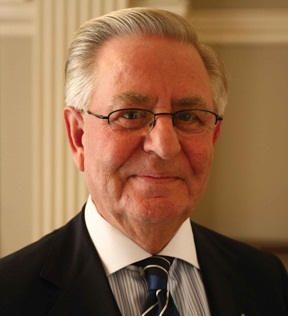By Asma Afsaruddin
Religious pluralism is one of the few, truly, modern, expressions. The term refers to the acceptance of a multitude of religions existing in harmony despite internal doctrinal differences and variations in external rituals and practices. Although the term itself hails only from the 20th century, one might argue that the idea has been around for much longer and has been part of a Muslim ethos from a very early period.
This is not to deny that other religious traditions may also have developed such an ethos in the past or that they are capable of doing so in the future; I speak only from my, personal, observations, which are strictly limited to the religious tradition that I know best — Islam.
Religious pluralism may be inferred from the Quran itself and the abundant commentary literature on it from the early centuries of Islam. The Quran valorizes Judaism, Christianity, and Islam equally on the basis of a shared belief in the one God and righteous behaviour. It praises righteous practitioners of all monotheistic faiths as belonging to a moderate, balanced, and just community. Justice is extolled in the Quran as an ethical principle held in common by righteous believers, a natural correlate of their moral charge on earth to uphold what is good and forbid what is wrong. The pluralist ethos imparted by these verses was largely endorsed by early Muslim scholars; historical literature indicates that this general principle of inclusion was eventually extended to other non-Abrahamic religious communities, such as the Zoroastrians, Hindus, and Buddhists.
However, roughly after the ninth century, this pluralist impulse began to be progressively diluted and compromised in response to various socio-political and theological developments. Over time, many (though by no means all) Muslim scholars came to consider ‘right’ belief and ‘right’ practice as, exclusively, a confessional allegiance to Islam. While other religious and communities were to be tolerated and even granted autonomy in determining their internal affairs, these jurists decided that they were not to be deemed equal to Muslims.
Today we find that there is a resurgence of interest among a substantial number of Muslim thinkers towards retrieving the early pluralist ethos, and making it part of contemporary Muslim-majority societies especially as many of these societies are already quite multi-cultural, multi-ethnic, and multi-religious .
And yet, recent shocking examples of religious intolerance and sectarian hatred in some of these countries have dominated global news. In Egypt, on New Year’s Eve in 2010, there was a brutal attack by militants on Saints Church in Alexandria, Egypt; 21 Christian Copts were killed. Though the reaction from the majority Egyptian Muslim population was one of outrage and horror — Al-Azhar University, the premier institution of learning in the Sunni Muslim world, took the lead in condemning the attack — media coverage focused on horror. Less well-noticed were scenes of heart-warming inter-faith solidarity and loyalty that followed in the wake of the attacks. Muhammad El-Sawy, a young Muslim entrepreneur, immediately organized what became known as a “human shields” campaign. Under the slogan “We either live together or die together,” El-Sawy and his fellow organizers, aided by social media tools, rallied thousands of Egyptians — from ministers to movie stars — to turn up at the Coptic church on Coptic Christmas, January 7, 2011, for a dramatic show of solidarity, a finger-in-the-eye gesture at the militants.
We are so accustomed to stories of injustice emanating from the Middle East, we might be tempted to dismiss this as a fluke. Except that this trend of inter-faith solidarity asserted itself repeatedly during the spontaneous pro-democracy movement that erupted in Tahrir Square in Cairo this year. On the Sunday during the so-called “Week of Resistance,” Copts held their Mass in Tahrir Square while Muslims formed a protective ring, defending worshippers against government troops. The Christians, in turn, created a protective cordon the following Friday when Muslims assembled for prayer. During funeral prayers for slain protestors, Muslims and Christians prayed together, carried copies of the Quran and the cross during the service, and chanted “One Hand!” If religious supremacists were squirming, no one was paying attention.
Young people and many of their elders across the Middle East are realizing that the desire for justice and freedom remains a common, basic, denominator that cuts across religious, ethnic and other divides. Religious pluralism is an ally of justice and freedom-seeking people everywhere. Egyptians recently proved that this new-found inter religious solidarity is the wave of the future, regardless of the considerable challenges that lie ahead.
Asma Afsaruddin is Professor of Islamic Studies, Indiana University, Bloomington. This article is published by DAILY NEWS EGYPT in collaboration with the UN Alliance of Civilization.
